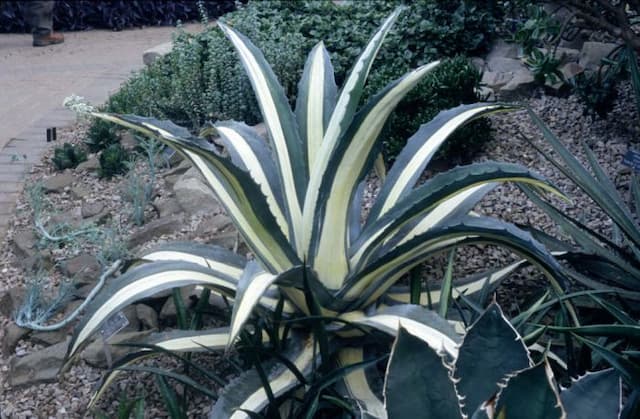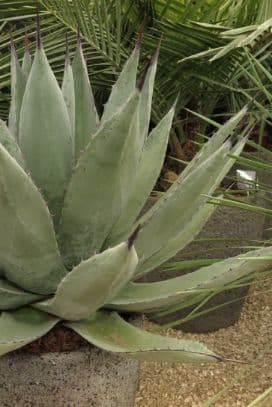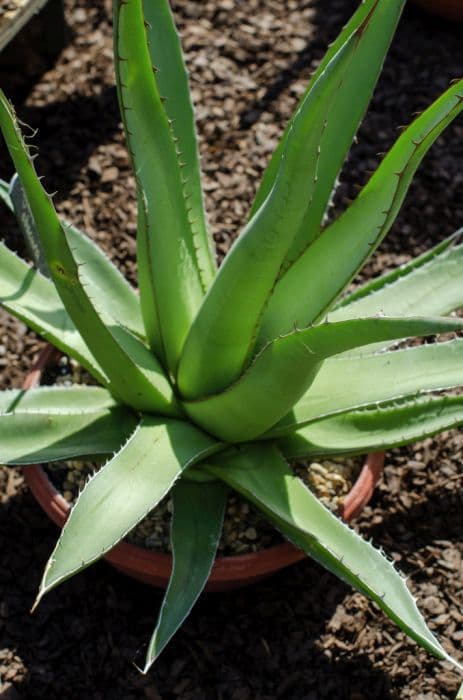Pebble Plant Massonia depressa

ABOUT
The plant commonly known as Pebble Plant is a bulbous species that is notable for its peculiar and striking appearance. This plant produces a pair of large, opposite leaves that lie flat on the ground. These leaves are typically broad and have a rough, textured surface that may be described as leathery, often sporting a dark green color with a slightly bluish or grayish tint. During its flowering season, the Pebble Plant produces a stout flowering stalk in the center of its leaf pair. The flowers of this plant gather in a dense, spherical cluster at the top of this stalk. Each individual flower is small and insignificant on its own, but together, they form an intriguing and attractive cluster. The flower color tends to be a shade of pink or mauve, with the petals often being adorned with interesting patterns or markings that contribute to the plant's overall ornamental value. The round seedpods that follow the flowers are also a visually interesting feature, as they add to the plant's textured appearance. Overall, the plant has a sturdy and succulent character, with its prominent features giving it a low-growing and robust visual profile that is well adapted to its native environment.
About this plant
 Names
NamesSynonyms
Depressed Onion, Giant Onion, White Bladder-Hyacinth
Common names
Massonia pustulata, Lapeirousia depressa, Whiteheadia bifolia, Whiteheadia depressa
 Toxicity
ToxicityTo humans
Massonia depressa, commonly known as the pebble plant, does not have a well-documented toxicity profile regarding its effects on humans. However, as a general rule with plants that are not widely recognized as edible, it is prudent to avoid ingesting any parts of the pebble plant. While there may not be specific reports of poisoning, unknown plants can sometimes contain compounds that are irritating or harmful if consumed. Without specific information on the toxicity of pebble plants to humans, the safest course of action is to not ingest any part of the plant and keep it out of reach of children, who might be tempted to eat its parts.
To pets
The toxicity of the pebble plant, or Massonia depressa, to pets such as dogs and cats is not well-documented in the available literature. There is no specific information that indicates this plant is particularly toxic to pets. However, given the lack of data, it is wise for pet owners to be cautious and prevent their pets from ingesting the plant. If a pet does consume any part of the pebble plant, monitoring for any signs of gastrointestinal upset or unusual behavior and consulting with a veterinarian is recommended.
 Characteristics
CharacteristicsLife cycle
Perennials
Foliage type
Evergreen
Color of leaves
Green
Flower color
White
Height
0.2 feet (5 cm)
Spread
0.5 feet (15 cm)
Plant type
Bulb
Hardiness zones
9
Native area
South Africa
Benefits
 General Benefits
General Benefits- Aesthetic Appeal: Massonia depressa, commonly known as 'Giant Squill', has a unique structure and striking white or cream flowers that can add an exotic aesthetic to gardens and indoor spaces.
- Drought Tolerance: Being a bulbous plant native to South Africa, Giant Squill is well-adapted to dry conditions, making it a suitable option for water-wise gardens and for gardeners in arid climates.
- Low Maintenance: It requires minimal care once established, mainly due to its adaptation to harsh environments, which means it doesn't need frequent watering or fertilizing.
- Seasonal Interest: The plant blooms in the winter, providing a point of interest during a season when few other plants are flowering, thus diversifying the seasonal display of a garden.
- Pollinator Attraction: The flowers of the Giant Squill can attract pollinating insects during its blooming period, supporting local biodiversity.
- Compact Size: It remains relatively small and is suitable for cultivation in pots, making it an ideal choice for small gardens or indoor containers.
- Rarity and Collection Value: As a less common plant, Massonia depressa can be a unique addition for plant collectors or enthusiasts looking to diversify their plant collections with unusual specimens.
 Medical Properties
Medical PropertiesThis plant is not used for medical purposes.
 Air-purifying Qualities
Air-purifying QualitiesThis plant is not specifically known for air purifying qualities.
 Other Uses
Other Uses- Massonia depressa, commonly known as the pebble plant, is sometimes used in educational settings for botany studies due to its unique leaf and flower structure, which provides a distinct example of floral adaptation in arid environments.
- The plant's bulb can serve as a survival food source if prepared properly, which is more common in traditional practices by indigenous people familiar with the plant.
- The tough, leathery leaves of the pebble plant can be used in crafts for creating impressions in soft materials, like clay or plaster, due to their textured surface.
- Pebble plants are sometimes utilized in environmental art installations; their striking geometric form adds a sculptural element to such works.
- The plant's unique flowering can be a helpful natural indicator of seasonal changes for gardening enthusiasts to time the cultivation of other plants.
- In landscape design, Massonia depressa can be used as ground cover to create a bed of greenery that complements rock gardens or modern, minimalist themes.
- Amateur photographers and artists may use the pebble plant as a subject for practicing close-up photography techniques or still-life painting due to its interesting shape and texture.
- Collected rainwater from the pebble plant's leaf basin can be used for small-scale watering of other nearby plants in a garden setting.
- The pebble plant could be used in sensory gardens designed for therapeutic purposes, as the plant's unique leaves provide a distinctive tactile experience.
- Bulbs of Massonia depressa might be a source for natural dyes, though experimentation and chemical analysis would be necessary to determine the viability and safety of such an application.
Interesting Facts
 Feng Shui
Feng ShuiThe Massonia depressa is not used in Feng Shui practice.
 Zodiac Sign Compitability
Zodiac Sign CompitabilityThe Massonia depressa is not used in astrology practice.
 Plant Symbolism
Plant Symbolism- Resilience: Massonia depressa, commonly known as the "Giant Pineapple Lily," can survive in harsh conditions, symbolizing the ability to endure and thrive in tough situations.
- Rarity: As the Giant Pineapple Lily is not a common plant and is quite unique in appearance, it represents the beauty and value of rarity.
- Unique Beauty: With its unusual shape and striking flowers, the Giant Pineapple Lily symbolizes the idea that beauty can come in unexpected forms.
- Groundedness: The plant's low stature and ground-hugging leaves suggest a symbolism of being well-grounded or down-to-earth.
 Water
WaterJigsaw flowers should be watered thoroughly whenever the soil has dried out completely, typically every one to two weeks depending on the environmental conditions. Use room temperature water and provide enough to moisten the soil thoroughly but not so much that the plant is sitting in water. A good rule of thumb is to add about 8-16 ounces of water for a medium-sized pot, adjusting this amount based on the size of the pot and the plant's needs.
 Light
LightJigsaw flowers thrive best in bright, indirect light. They should be placed near a window that receives plenty of light but is shielded from intense direct sunlight, which can scorch the leaves. A north or east-facing window is often ideal for providing the right light conditions.
 Temperature
TemperatureFor optimal growth, Jigsaw flowers should be kept in temperatures between 50°F and 75°F. They can survive a minimum temperature of about 40°F, but they should not be exposed to temperatures below freezing as they are not frost-tolerant. The ideal temperature range for Jigsaw flowers is between 60°F and 70°F.
 Pruning
PruningPruning Jigsaw flowers is not typically necessary except to remove any dead or damaged foliage, which can be done as needed to keep the plant tidy and healthy. The best time for any significant pruning is in the late winter or early spring before the new growth begins.
 Cleaning
CleaningAs needed
 Soil
SoilThe best soil mix for Massonia depressa, commonly known as pebble plant, should be well-draining with a mix of loam, sand, and a bit of peat to retain some moisture. A pH of 6.0 to 7.5 is ideal for this plant to thrive.
 Repotting
RepottingMassonia depressa, or pebble plant, should be repotted every 2 to 3 years or when it outgrows its pot, using fresh soil to refresh nutrients.
 Humidity & Misting
Humidity & MistingMassonia depressa, known as pebble plant, prefers moderate to high humidity, around 40-60%, mimicking its natural habitat.
 Suitable locations
Suitable locationsIndoor
Place pebble plant in bright, indirect light indoors.
Outdoor
Plant pebble plant in dappled shade outside.
Hardiness zone
9-11 USDA
 Life cycle
Life cycleMassonia depressa, commonly known as the Blister lily, begins its life cycle as a seed, often dispersed by wind or animals. Upon germination, which requires moist soil conditions, a bulb forms underground, serving as an energy reserve and survival mechanism during unfavorable conditions. The plant emerges in the fall, producing two opposite, large, ground-hugging leaves that are adapted to collect rainwater and dew. After the vegetative stage, it flowers in the winter, displaying eye-catching, white to purple blossoms with a strong, sweet scent to attract pollinators such as bees. Following pollination, the ovary develops into a capsule fruit that contains several seeds, completing the reproductive stage. The Blister lily then enters a dormancy phase during the dry summer months, with the bulb lying dormant underground until environmental conditions become favorable again.
 Propogation
PropogationPropogation time
Spring to Summer
Propogation: Massonia depressa, commonly known as Massonia, is typically propagated through seed sowing. The ideal time for this is in the autumn, allowing the seeds to benefit from the cooler and wetter season that stimulates germination. To propagate Massonia from seeds, the grower should scatter the seeds thinly on top of a well-draining soil mix. The seeds need light for germination, so they should not be buried deeply but can be gently pressed into the soil surface or covered with a light layer of sand. The soil should be kept moist but not waterlogged. Germination can be slow and uneven, taking several weeks to months, but once the seedlings appear and are large enough to handle, they can be carefully transplanted into individual pots to grow on before being planted out.









